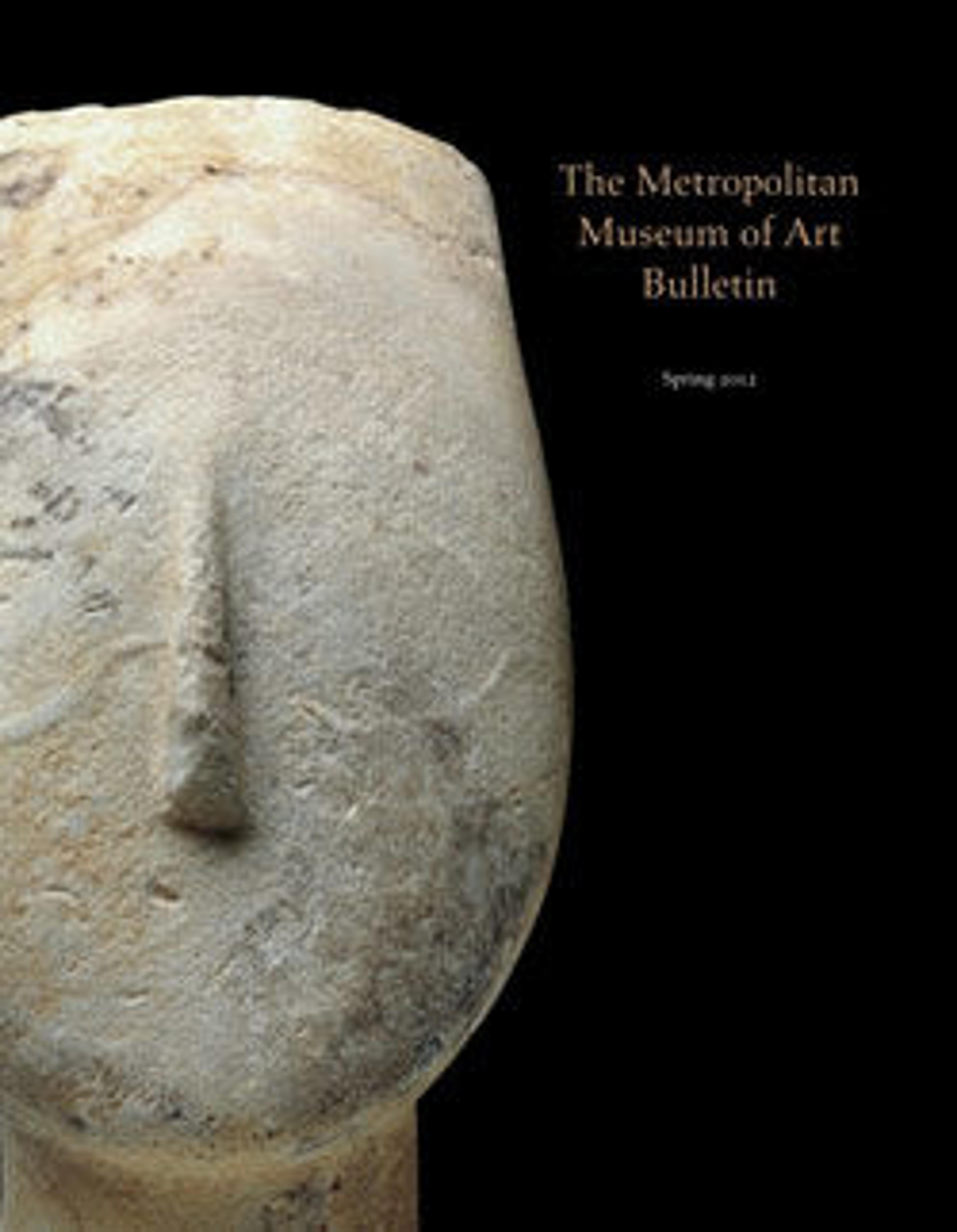Terracotta pyxis (cylindrical box)
Most of the Minoan palace centers on Crete were destroyed around 1450 bce, marking the end of the Minoan influence on arts and crafts throughout the Aegean region. These sites were later occupied and rebuilt by Mycenaeans from mainland Greece, and pottery produced on Crete during this period reflects the introduction of new artistic styles and vessel shapes. While the painted decoration on pottery of Postpalatial Crete is not as fine as the earlier works produced in the palace workshops, the quality of potting and the pyrotechnology reached a high point. This pyxis is a variation of the characteristic Minoan type, which typically has a taller cylindrical body.
Artwork Details
- Title:Terracotta pyxis (cylindrical box)
- Period:Late Minoan III
- Date:ca. 1400–1100 BCE
- Culture:Minoan
- Medium:Terracotta
- Dimensions:diameter 10 1/4in. (26cm)
- Classification:Vases
- Credit Line:Gift of Alexander and Helene Abraham, in honor of Carlos A. Picón, 1999
- Object Number:1999.423
- Curatorial Department: Greek and Roman Art
More Artwork
Research Resources
The Met provides unparalleled resources for research and welcomes an international community of students and scholars. The Met's Open Access API is where creators and researchers can connect to the The Met collection. Open Access data and public domain images are available for unrestricted commercial and noncommercial use without permission or fee.
To request images under copyright and other restrictions, please use this Image Request form.
Feedback
We continue to research and examine historical and cultural context for objects in The Met collection. If you have comments or questions about this object record, please contact us using the form below. The Museum looks forward to receiving your comments.
